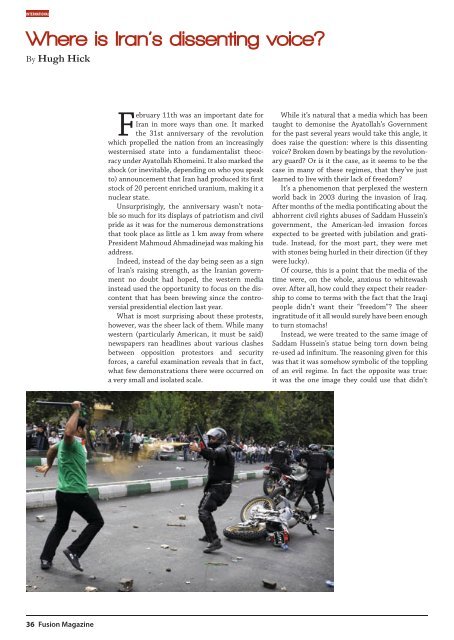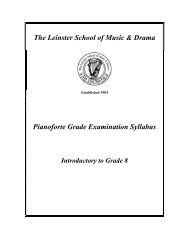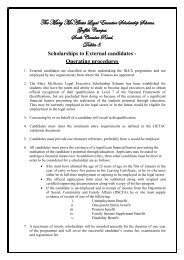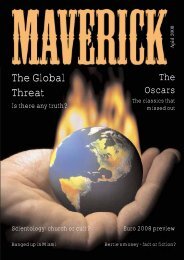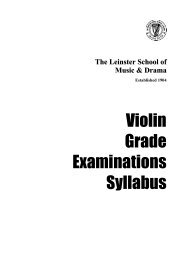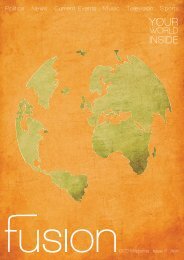Click here to View - Griffith College Dublin
Click here to View - Griffith College Dublin
Click here to View - Griffith College Dublin
- No tags were found...
Create successful ePaper yourself
Turn your PDF publications into a flip-book with our unique Google optimized e-Paper software.
internationalW<strong>here</strong> is Iran’s dissenting voice?By Hugh HickFebruary 11th was an important date forIran in more ways than one. It markedthe 31st anniversary of the revolutionwhich propelled the nation from an increasinglywesternised state in<strong>to</strong> a fundamentalist theocracyunder Aya<strong>to</strong>llah Khomeini. It also marked theshock (or inevitable, depending on who you speak<strong>to</strong>) announcement that Iran had produced its firsts<strong>to</strong>ck of 20 percent enriched uranium, making it anuclear state.Unsurprisingly, the anniversary wasn’t notableso much for its displays of patriotism and civilpride as it was for the numerous demonstrationsthat <strong>to</strong>ok place as little as 1 km away from w<strong>here</strong>President Mahmoud Ahmadinejad was making hisaddress.Indeed, instead of the day being seen as a signof Iran’s raising strength, as the Iranian governmentno doubt had hoped, the western mediainstead used the opportunity <strong>to</strong> focus on the discontentthat has been brewing since the controversialpresidential election last year.What is most surprising about these protests,however, was the sheer lack of them. While manywestern (particularly American, it must be said)newspapers ran headlines about various clashesbetween opposition protes<strong>to</strong>rs and securityforces, a careful examination reveals that in fact,what few demonstrations t<strong>here</strong> were occurred ona very small and isolated scale.While it’s natural that a media which has beentaught <strong>to</strong> demonise the Aya<strong>to</strong>llah’s Governmentfor the past several years would take this angle, itdoes raise the question: w<strong>here</strong> is this dissentingvoice? Broken down by beatings by the revolutionaryguard? Or is it the case, as it seems <strong>to</strong> be thecase in many of these regimes, that they’ve justlearned <strong>to</strong> live with their lack of freedom?It’s a phenomenon that perplexed the westernworld back in 2003 during the invasion of Iraq.After months of the media pontificating about theabhorrent civil rights abuses of Saddam Hussein’sgovernment, the American-led invasion forcesexpected <strong>to</strong> be greeted with jubilation and gratitude.Instead, for the most part, they were metwith s<strong>to</strong>nes being hurled in their direction (if theywere lucky).Of course, this is a point that the media of thetime were, on the whole, anxious <strong>to</strong> whitewashover. After all, how could they expect their readership<strong>to</strong> come <strong>to</strong> terms with the fact that the Iraqipeople didn’t want their “freedom”? The sheeringratitude of it all would surely have been enough<strong>to</strong> turn s<strong>to</strong>machs!Instead, we were treated <strong>to</strong> the same image ofSaddam Hussein’s statue being <strong>to</strong>rn down beingre-used ad infinitum. The reasoning given for thiswas that it was somehow symbolic of the <strong>to</strong>pplingof an evil regime. In fact the opposite was true:it was the one image they could use that didn’t36 Fusion Magazine


